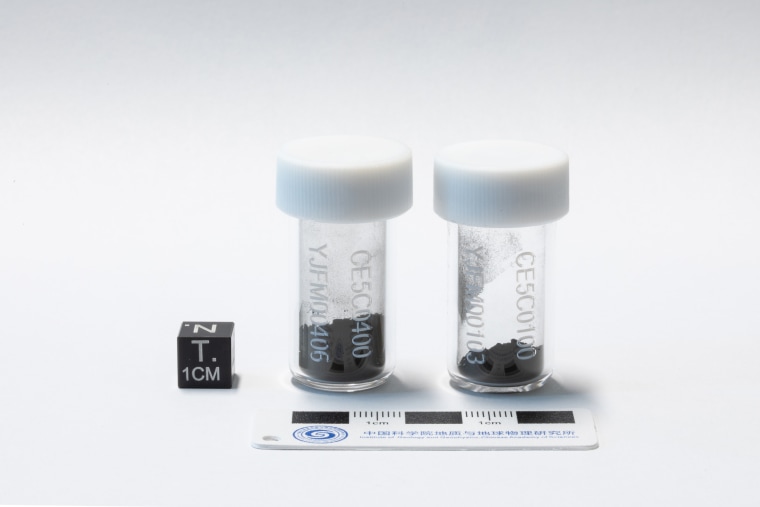Chinese scientists have discovered a “brand-new method” of producing large quantities of water using lunar soil brought back from a 2020 expedition, state broadcaster CCTV reported on Thursday.
In 2020, China’s Chang’e-5 mission marked the first time humans had retrieved lunar samples in 44 years. Researchers from the state-run Chinese Academy of Sciences discovered that the minerals in this "moon soil" contain large amounts of hydrogen, which reacts with other elements when heated to very high temperatures, producing water vapor, CCTV reported.
“After three years of in-depth research and repeated verification, a brand-new method of using lunar soil to produce large amounts of water was discovered, which is expected to provide important design basis for the construction of future lunar scientific research stations and space stations,” said CCTV.
The discovery could have important implications for China’s decades-long project of building a permanent lunar outpost amid a U.S.-China race to find and mine the moon’s resources.
 Vials of lunar soil brought back from the moon by China's Chang'e-5 probe in Beijing, on Aug. 26, 2021.Ren Hui / VCG via Getty Images file
Vials of lunar soil brought back from the moon by China's Chang'e-5 probe in Beijing, on Aug. 26, 2021.Ren Hui / VCG via Getty Images file NASA head Bill Nelson has repeatedly raised the alarm about the rapid advances in China’s space program and the possibility of Beijing dominating the most resource-rich locations on the moon.
Using the new method, one metric tonne of lunar soil will be able to produce about 51 to 76 kilograms of water, equivalent to more than a hundred 500-millileter bottles of water, or the daily drinking water consumption of 50 people, the state broadcaster said.
China hopes that recent and future lunar expeditions will set the foundations to build the International Lunar Research Station (ILRS), an initiative it is co-leading with Russia.
China’s space agency has set 2035 as the date by when a “basic station” on the moon’s south pole will be built, with a moon-orbiting space station added by 2045.
The announcement of the discovery comes at a time when Chinese scientists are already conducting experiments on lunar samples brought back in June by the Chang’e-6 mission.
While the Chang’e-5 mission brought back samples from the near side of the moon, Chang’e-6 retrieved lunar soil from the far side of the moon, which perpetually faces away from the Earth.
The importance of lunar water goes beyond making permanent human presence viable. NASA’s Nelson told NPR in May that water found on the moon could be used to create hydrogen rocket fuel which could fuel further space exploration to Mars and other destinations.
Reuters
Reuters

 10 months ago
10 months ago
 (200 x 200 px).png)








 English (US) ·
English (US) ·